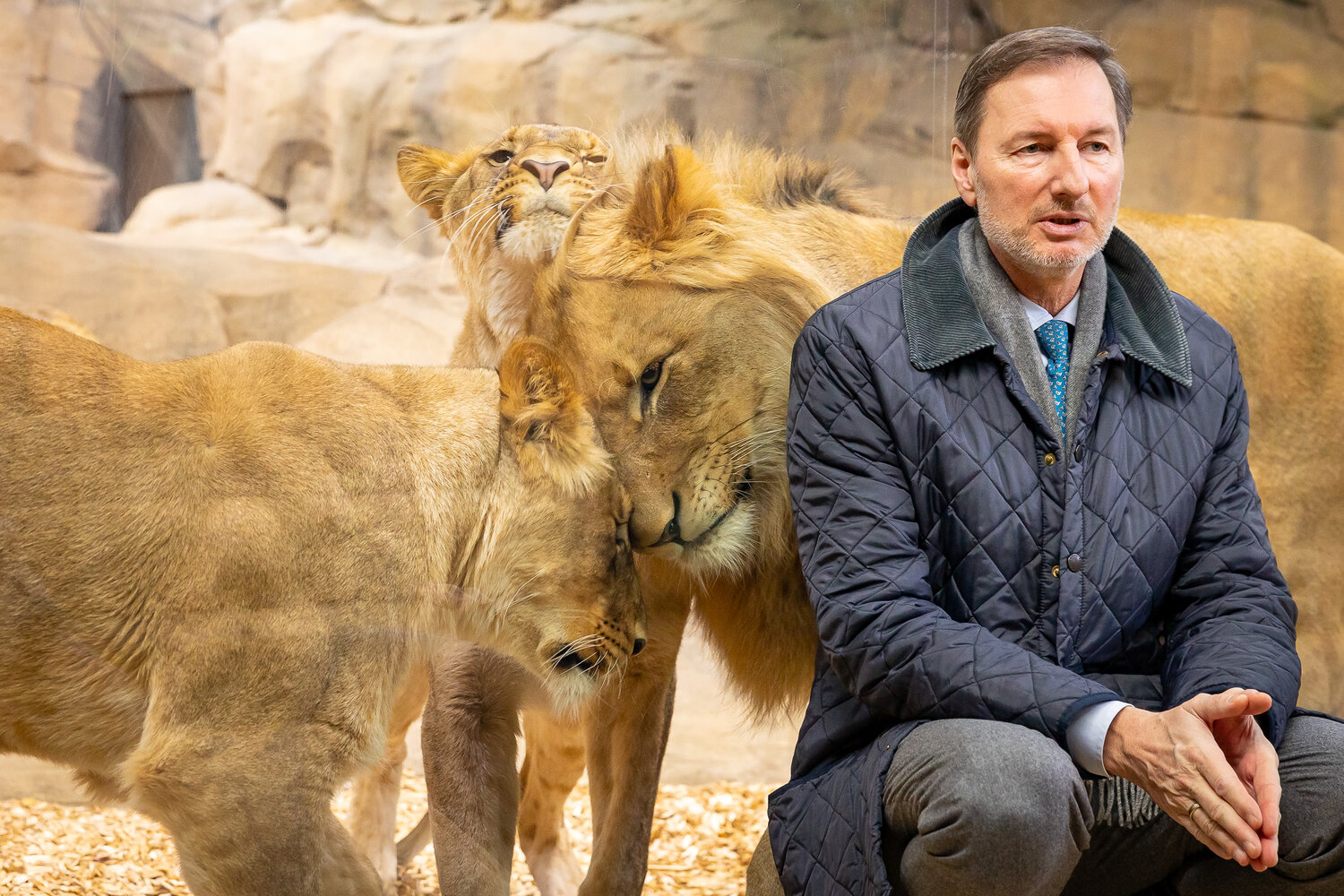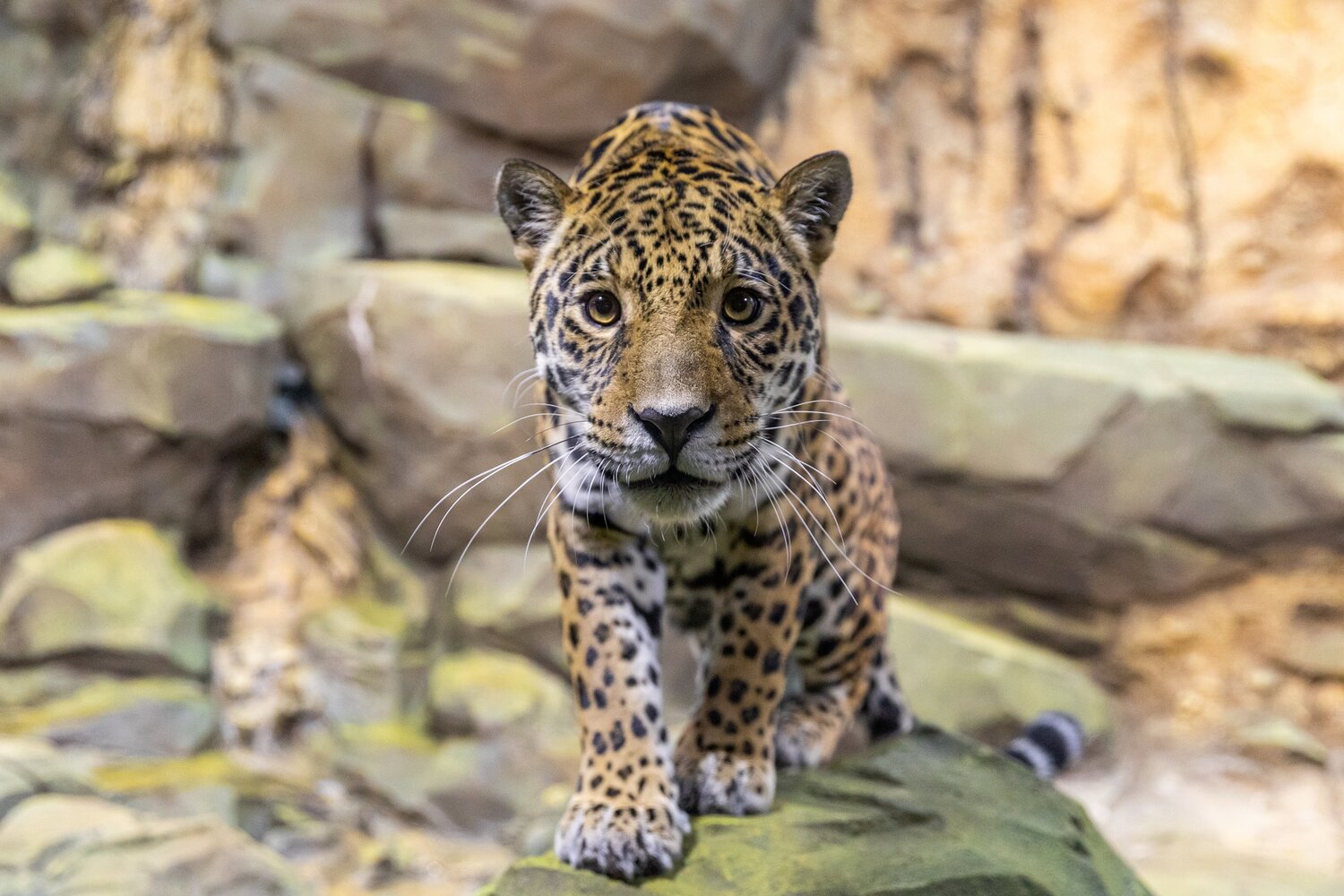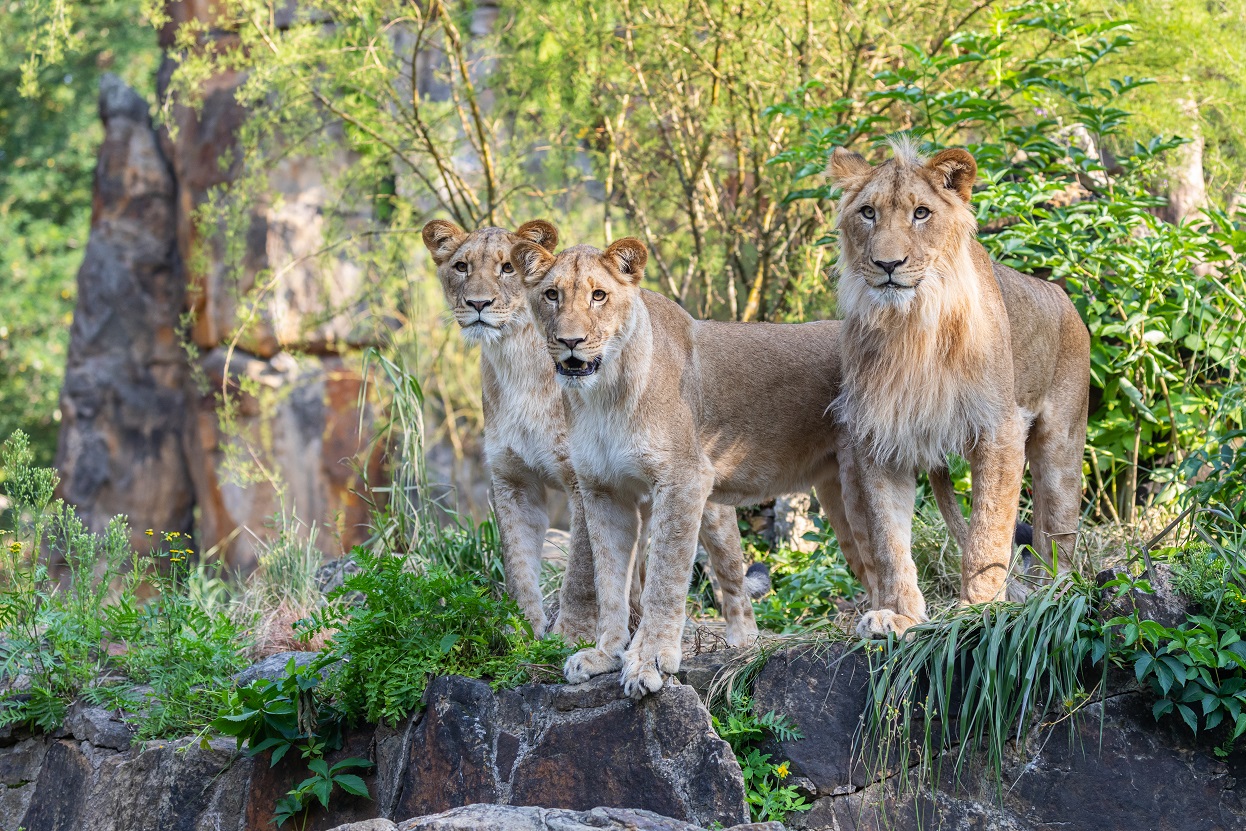A pride of lions roams the savannah-like landscape, while a magnificent tiger watches every move made by the human intruders in its territory. As visitors break away from the tiger’s intimidating gaze, they find themselves face to face with a jaguar, about to take a cool dip in the pool. Zoo Berlin’s new Empire of Cats offers visitors an immersive experience in the fascinating world of feline predators, with awe-inspiring moments around every corner.
Where sterile rows of cages once stood, with thick bars separating visitors from the big cats, spacious habitats have been created that recall the inhabitants’ homes in the wild. This animal house originally opened in the 1970s, but now extensive renovation work has brought the building into the modern era – with natural flooring materials, trees for climbing, and pools for swimming. “The old building was outdated, there is no doubt about that,” says Zoo and Tierpark Director Dr Andreas Knieriem. “It is also clear that our job as a zoological institution has evolved over the years. Today, we are here to inspire, inform and raise awareness with the help of our animal ambassadors. We are also committed to protecting these species in their natural habitats.” Through four-centimetre-thick panes of glass, visitors can now enjoy an unobstructed view and unprecedented close-up experiences of the mighty predators. In place of the old tiles, the walls are now adorned with landscapes modelled on the natural habitat of the animal residents. And the new facility isn’t only a treat for the eyes, there is plenty for the other senses, too – with perforated steel sheets ensuring that visitors can also experience the characteristic smells and sounds of the impressive beasts housed here. Summarising the building’s transformation, Knieriem says: “Here, the humans are guests in the animals’ world, and visitors can look forward to intimate encounters with some truly impressive predators. We would like to take this opportunity to thank all donors for their generous financial support.”
Raising awareness and enthusiasm
The building also houses an in-depth exhibition where visitors of all ages can learn the secrets of these remarkable hunters and discover that even fearless predators sometimes find themselves in danger. What does a tiger’s tongue feel like? How do cats see at night, and in what ways are their bodies perfectly adapted to hunting? What are the consequences of human interference in intact ecosystems? Interactive exhibits and edutainment stations answer these questions and many more while underlining the building’s core message: cats are fascinating predators and we have a responsibility to protect them. A Berlin-based exhibition design firm assisted Zoo Berlin in developing the educational concept for the new Empire of Cats permanent exhibition, which was financed with GRW funds.
The new and improved building also reunites visitors with the “Creatures of the Night”, including the much-loved aardvarks and slow lorises, that live in the dark depths of the nocturnal animal house. This popular underground attraction is now also home to three new species: the Malagasy giant rat, the Goodman’s mouse lemur, and the black-rumped agouti. “We are delighted that we are finally able to reopen this visitor highlight – after a series of considerable hurdles,” says Florian Magoley, Deputy Technical Director at Zoo Berlin. “Another step will be completed next year with the construction of three more outdoor habitats for our tigers, leopards and jaguars,” he adds. As well as pandemic-related challenges, the structural fabric of the building had deteriorated to a far greater extent than expected and additional maintenance work had to be carried out. As a result, construction of the new facility took around four years rather than the almost two years expected. This, together with a general increase in price of materials, meant that the total cost also ended up higher than anticipated at around €14 million.
Commitment on the ground
Successful conservation of endangered species can only be achieved through targeted breeding programmes and the protection of natural habitats. That’s why Berlin’s zoos have joined forces with Chances for Nature in Madagascar in an effort to protect the Kirindy Forest in the Menabe-Antimena Protected Area – home to species including the narrow-striped mongoose and Malagasy giant rat. Researchers from Chances for Nature have a permanent presence in the Kirindy Forest, where they are getting the local population on board with efforts to protect this unique dry forest habitat.


